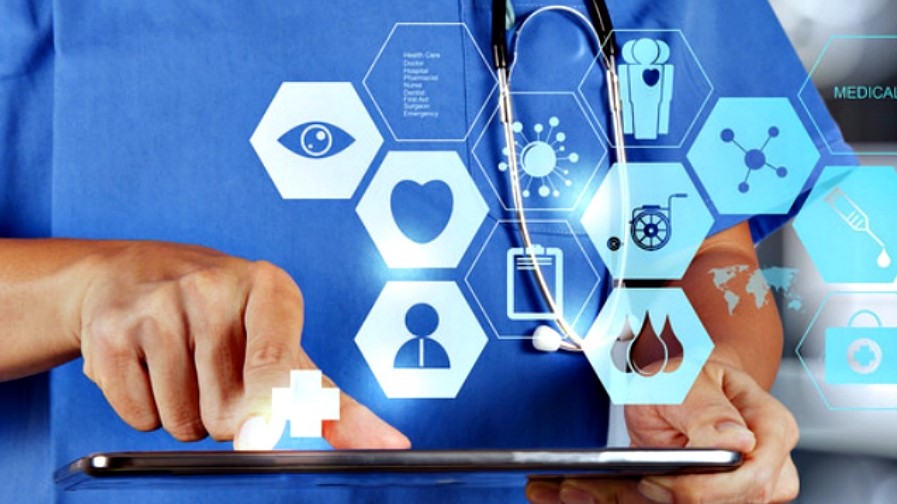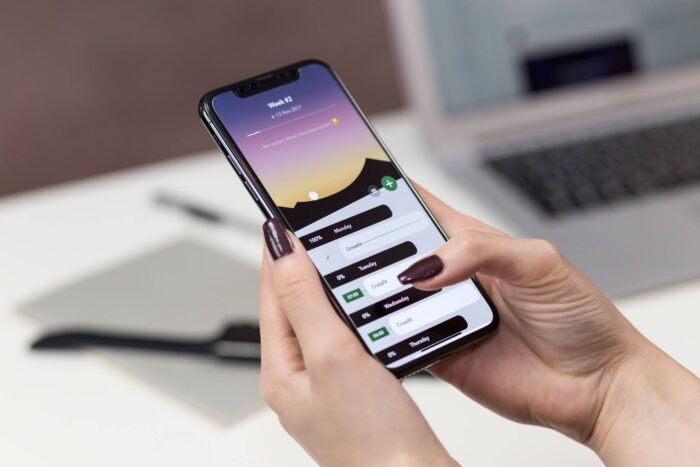
Healthcare is a fast-growing section of business right now. In 2024, the total amount of digital health funding increased from $14.6B to $20B, making the past three quarters the highest-funded nine months in the industry’s history.
More people now trust modern tech, so the main task of healthcare app development as a Diversido.io is to design new digital solutions in a way that keeps that trust and provides even better care. Right now, behavioral health, women’s health, and niche telemedicine solutions targeted at specific underserved audience groups are especially relevant.
This article will cover design trends for digital healthcare — the ones you could use to make your mHealth solution better.
1. Voice User Interface

If you’re following the trends, you have probably heard of Voice User Interface (VUI) technology, which has been blowing up the market for the last couple of years. This is a great discovery for healthcare professionals with its main feature of using speech recognition to understand spoken commands and answer questions. It is very popular within provider-oriented healthcare applications now: clinicians save time that they’ve usually spent taking notes or filling up the EHR by just telling their voice assistants what needs to be written down.
Or, even better, a voice assistant can listen to a conversation a doctor is having with a patient, apply its AI-based speech recognition algorithms and understand what needs to be in the patient history and what — in doctor’s notes — by itself.
It’s easy to imagine how much resources such technology can save for doctors. Just three years ago, doctors were immensely frustrated by needing to spend most of their patient time in front of the computer. Now, this situation changes.
2. Smart Data Loading
Lazy loading is a strategy for defining a part of an app content as non-critical to delay its loading until it’s needed. That accelerates the app loading time. Lazy loading is usually triggered during scrolling and navigation — and it provides a better user experience.
Pages are loading faster. This improves the overall impression from the app and increases the number of engaged visitors (if the app is too slow, users drop it quickly). Healthcare apps are expected to deliver a good user experience by default — and the loading speed is a large part of that.
Less data is processed. Due to lazy loading, an app or a website will process things that are on the user’s screen right now (Instagram works like that, for instance.) That is especially important if your app contains a lot of heavy content: data analytics and visualization, video, podcasts, group chats, etc.
Saved energy. Lazy loading saves energy and preserves battery life, keeping devices from overheating and keeping users from having to deal with 0% charge. mHealth apps need to be sustainable because far from every user has a smartphone of the last model with good battery life. It’s an accessibility matter.
3. Use Human Elements

Technologies we implement should be more personalized and humane to the users. Write in simple language, omit medical jargon, try to explain the most complex things as if you are talking to an anxious person who is five seconds away from hurriedly googling their symptoms.
Don’t put stock photos in the app — use real photos of the hospital’s employees.
Add an opportunity for other patients to leave reviews for doctors they’ve visited. First of all, doctors would be very happy to receive kind words — especially in, you know, the second year of the pandemic. Secondly, more people will use your services — user-generated content is always the best signifier of good services. (Do not hire people to write the reviews instead of patients — it shows.)
4. Add Microinteractions
Microinteractions are features that perform a small task and mostly remain invisible unless they’re needed. E.g., notifications are microinteractions. An application can ask the user to describe how they feel today; present personalized advice based on what they’ve said; remind them about an appointment with a clinician.
Integrated with wearables, mHealth apps can gently nudge users towards a walk if they are sitting too much. Ask what happened after the bracelet detected a spike in a user’s heartbeat. Remind them to move away from any bright screen in time to get a good night’s sleep. You got it — microinteractions can help users form habits, make them feel cared for.
Outside of notifications, nice microinteractions happen when, for instance, a user can take a photo of their pill bottle — and the camera will read all info about medications from it, data input made effortless and comfortable.
5. Personalize User Experience

33% will stop using an app if it’s not personalized enough. Healthcare apps can employ different personalization-based features, especially when they are connected to wearables or when there are features for self-reporting tools.
That was briefly covered in the microinteraction section, as microinteractions are often one of the ways to deliver personalization to users. You can use the data users provide you with to design interactions specifically for them. Direct them to schedule an appointment with a doctor or order a COVID-19 test kit after they’ve got a worrying result from a survey within a symptom checker. Guide them to calming rain sounds to help them fall asleep faster. Be there for them.
Different language options, different ways of connecting to healthcare practitioners (chats, video calls, phone calls, etc.), features that enable accessible design (when users can switch to dark mode, use the app with a screen reader, make the text larger) can also be part of your personalization efforts.
Summary
Pay more attention to details for implementing personalization in your app. Employ more features that save people’s time and effort. Know more about people you want to get value from this solution by allocating more resources to continuous UX research. (Also: design for the worst internet quality; it’s often better to sacrifice a pretty animation than risk an app not loading when it’s needed — especially if it’s a patient-facing solution.)








